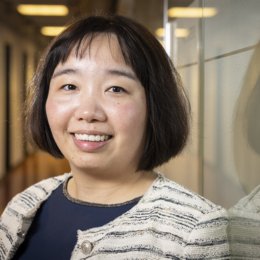Phased Array Antenna Systems
My name is Yang Miao, and my current featured research line is the joint communication and sensing (JCAS) in perspectives of antennas, radio propagation and radio signal processing. JCAS is not only promising for conventional mobile services that connect people, but also for emerging services such as contact-free human health monitoring and robotics monitoring for industry 4.0. I am particularly interested in applications with a focus on humans (or other biological entity) and mobility (air and ground).
Background
I completed my master and PhD degrees in Japan, and have worked or attended on exchange in Finland, Sweden, Belgium, China, U.K., and now the Netherlands. My current position is an assistant professor. This means I dedicate 50% of my time to education, including teaching and supervising students. The other 50% is dedicated to research, including project design and acquisition, publications, among other activities.
My major research expertise lies in the field of antennas, radio propagation, and radio signal processing (e.g., for double-directional channel parameter estimation). I am passionate about shaping future-oriented visions as well as building systematic strategies with assumptions, limitations, and validity ranges of models constructed to approximate reality. I am proud to provide theoretical methodologies based on physics-mathematics to radio science/engineering, validated with a reproducible test approach in labs/realities. With this research, our goal is to create more intelligent networks with smarter designs and lower consumption.
Joint communication and sensing using (sub-)mmWaves and sub-6 Ghz radio frequencies is impacting and shaping the future of networks. It not only enables connectivity at high data rates, but also senses the environment with high accuracy. It can also enable better personalised healthcare, monitoring patients wirelessly without placing devices on their bodies, and transmitting health monitoring data wirelessly as well. Radio frequency sensing protects privacy better than camera based systems and offer a better future for assisted living and care at home or in a hospital. Similarly, joint communication and sensing is promising for smarter manufacturing, smarter bikes, smarter buildings, smarter air corridors, smarter autonomous vehicles, smarter farming, and so on.
In the years to come
My research is the paradigm shift for future networks. The open challenges are demanding to be solved, including the innovative design of antenna array systems that enable joint functionality, innovative signal/data processing/analysis with low latency and reliability.
I hope to be successful in the future both in individual grant applications and in the acquisition of large consortium projects such as NOW-XL and MSCA-ITN. I am already a Marie-Curie (MSCA) Individual Fellow, which is a very good start. Furthermore, I hope to have enough time for research, and to take the field of human-mobility centric joint communication and sensing to the next level.
Education
I am in the teaching team of the bachelor module Fields and Waves operating both in Electrical Engineering and Advanced Technology, which is problem-based learning. Furthermore, I am a master course coordinator of Mobile Radio Communication, which is one of the compulsory courses in the specialisation Radio Systems. This course adopts challenge-based learning.
Collaborations
I am currently collaborating with multiple companies for my research. Firstly, I work with Philips on radio connectivity prediction and evaluation in hospital scenarios for wireless monitoring of patients. Secondly, I work with Xsens for multi-path assisted on-body tag localisation using a three-way communication kit, as well as motion capture using a mmWave radar. Lastly, I also work with other NL/EU industrial partners in proposals for funding acquisition.

